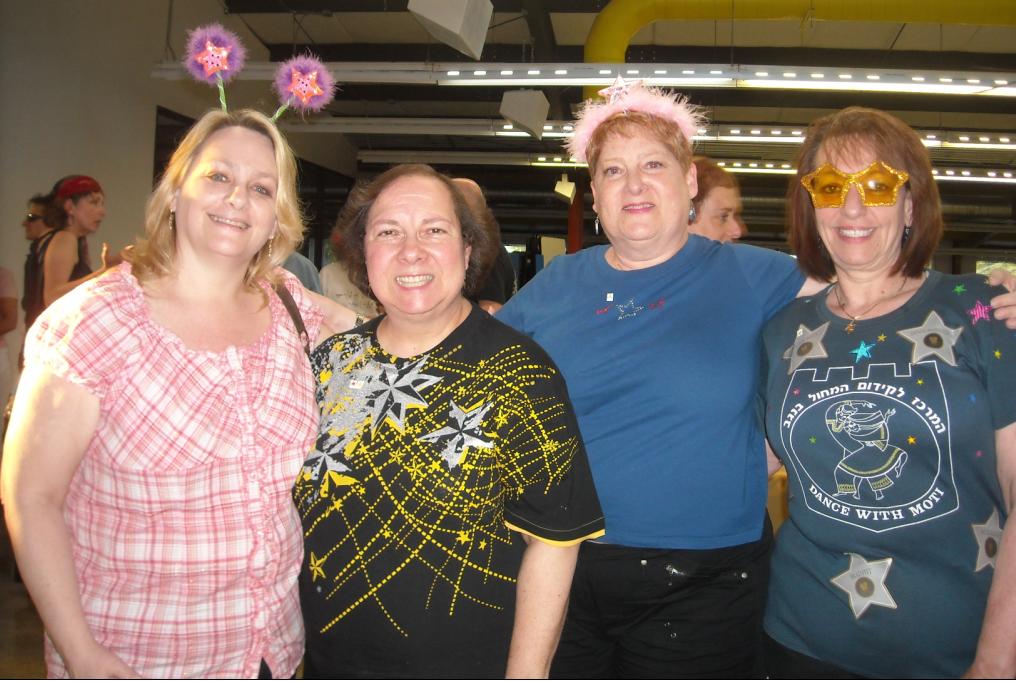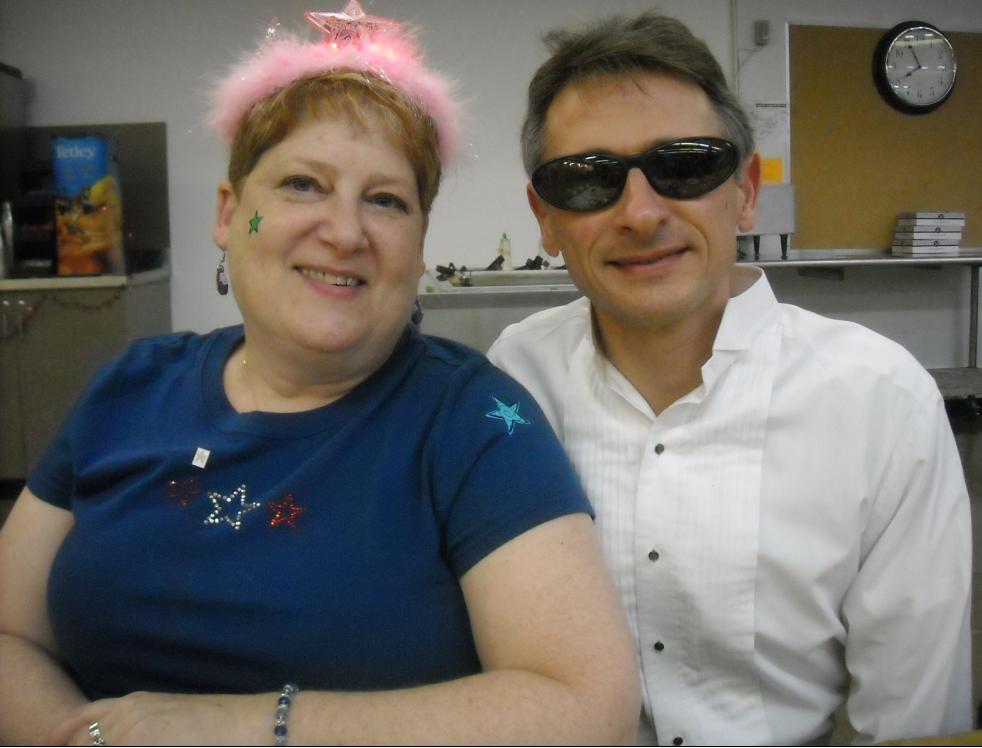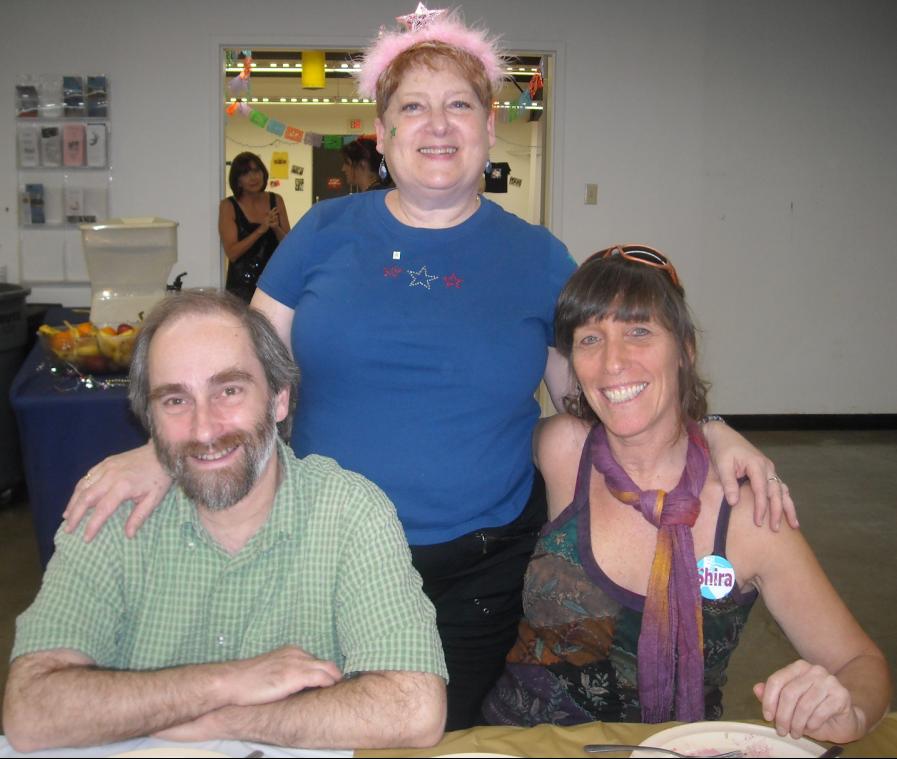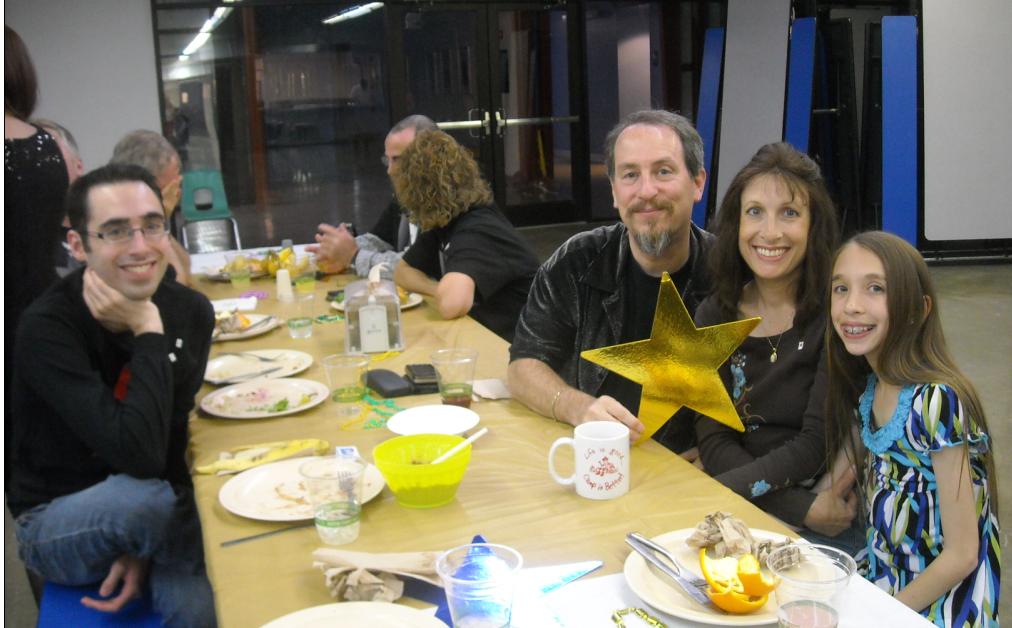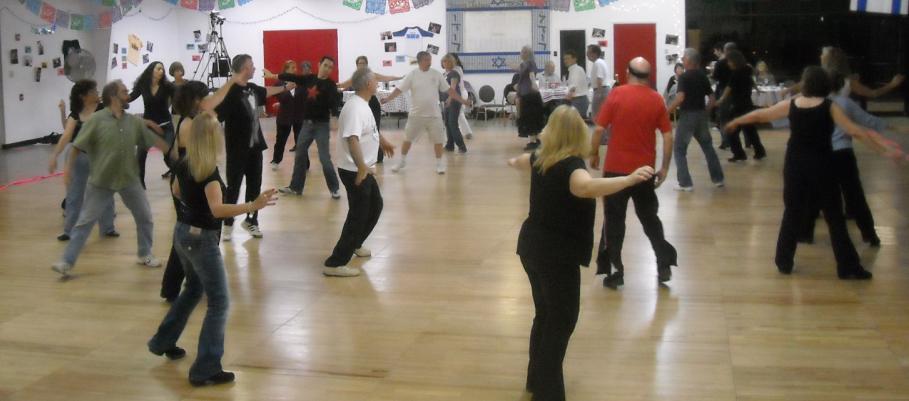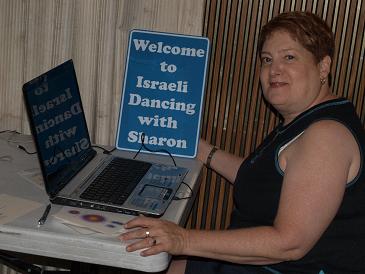
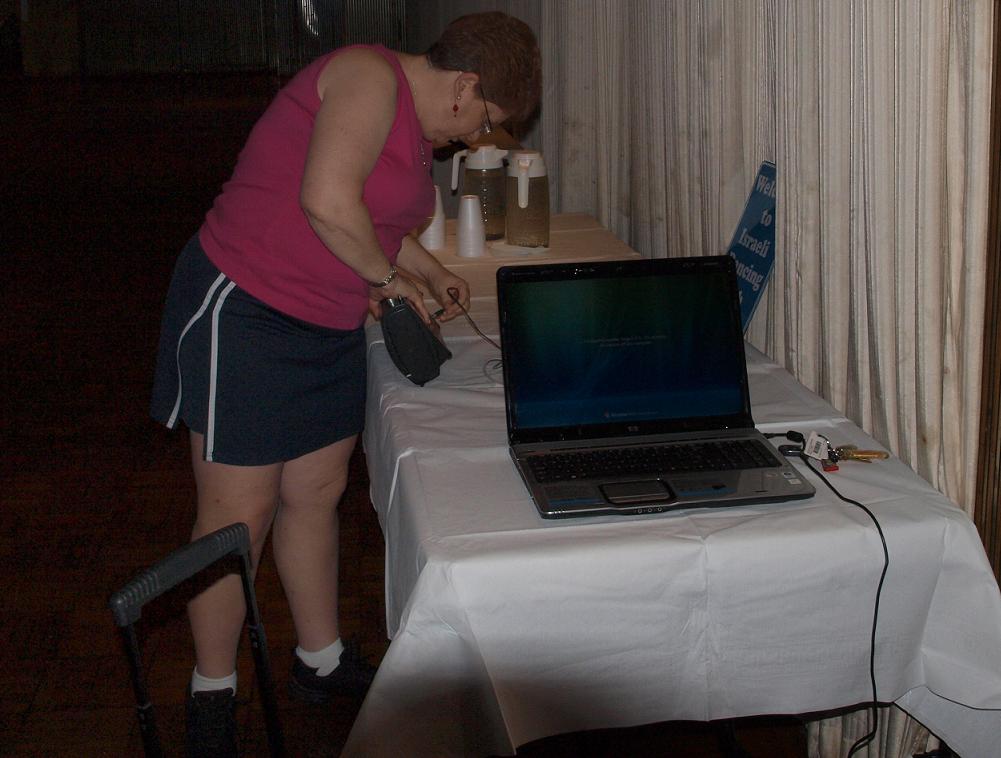
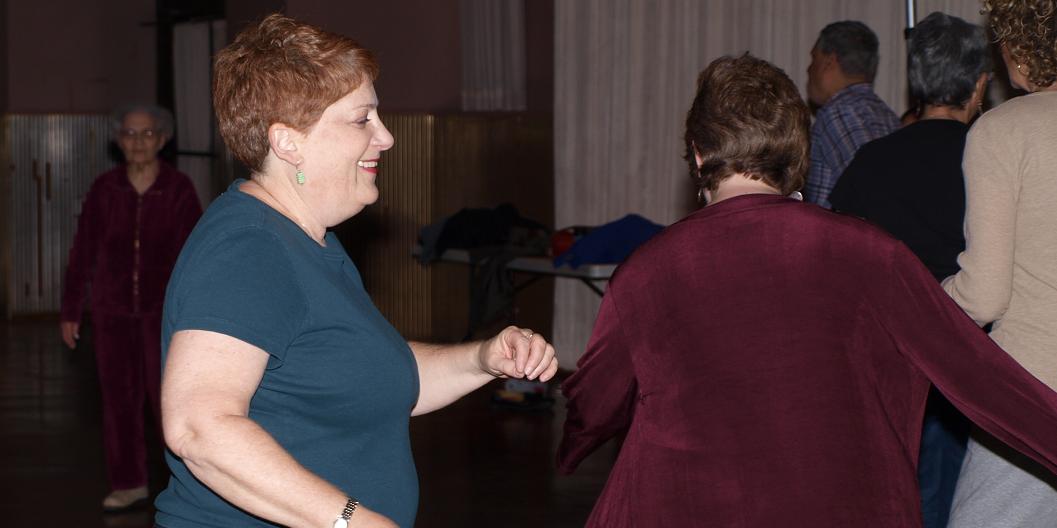
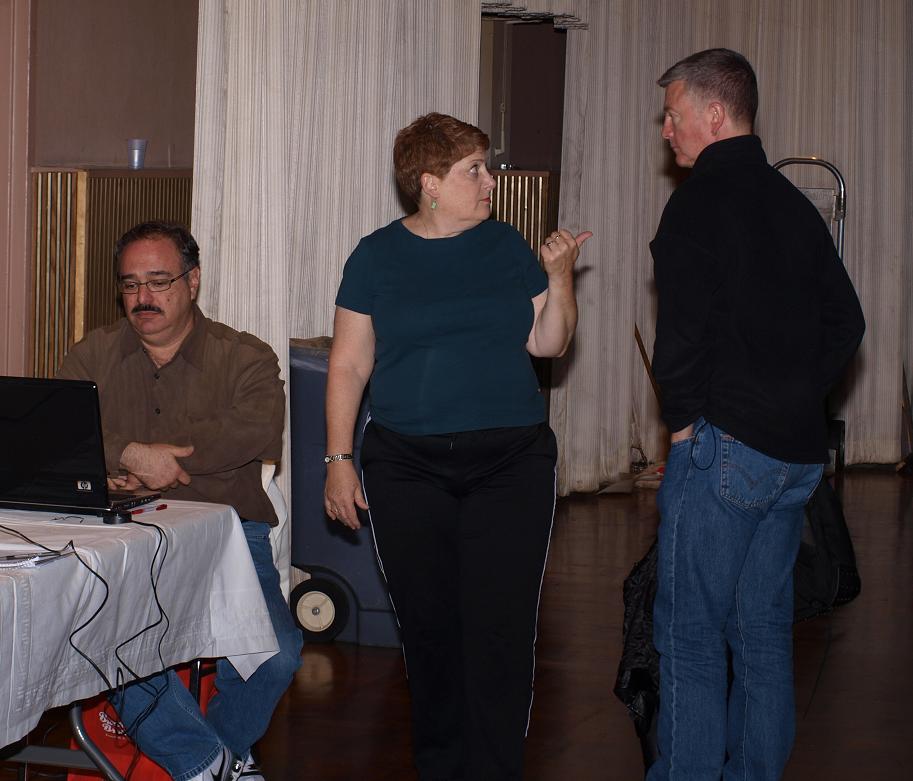
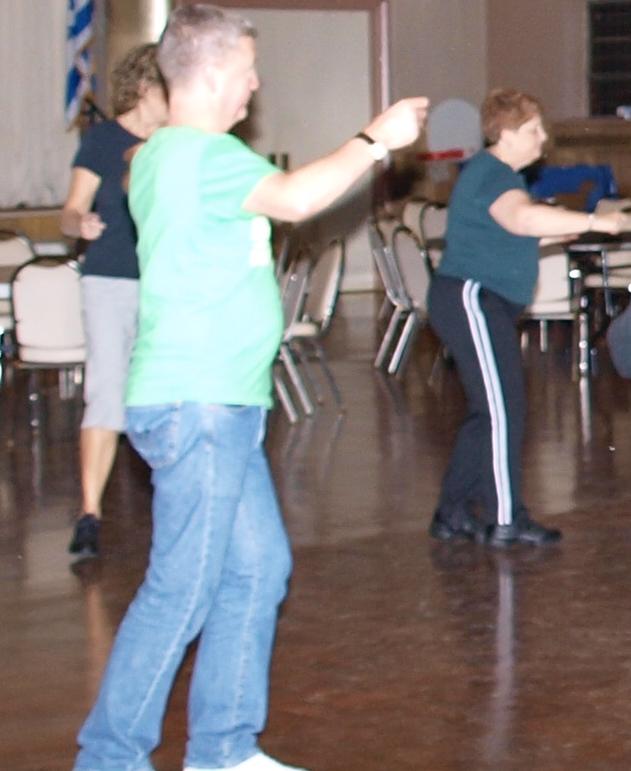





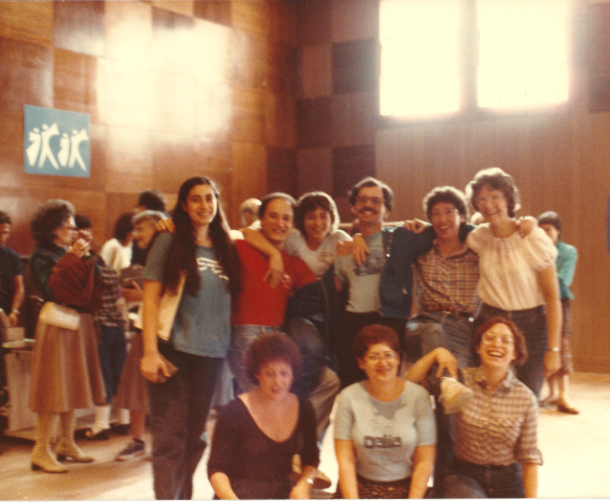
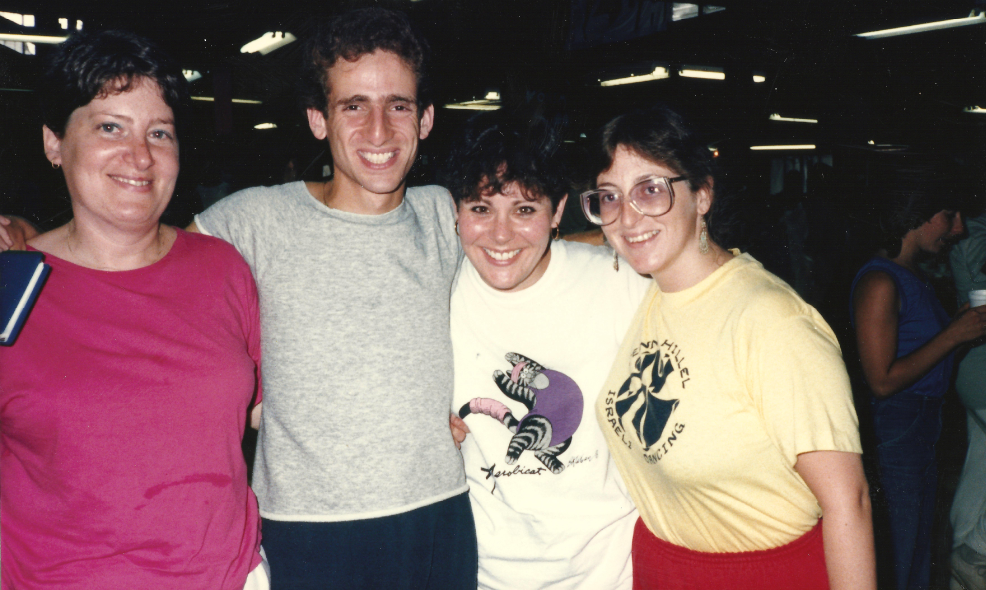
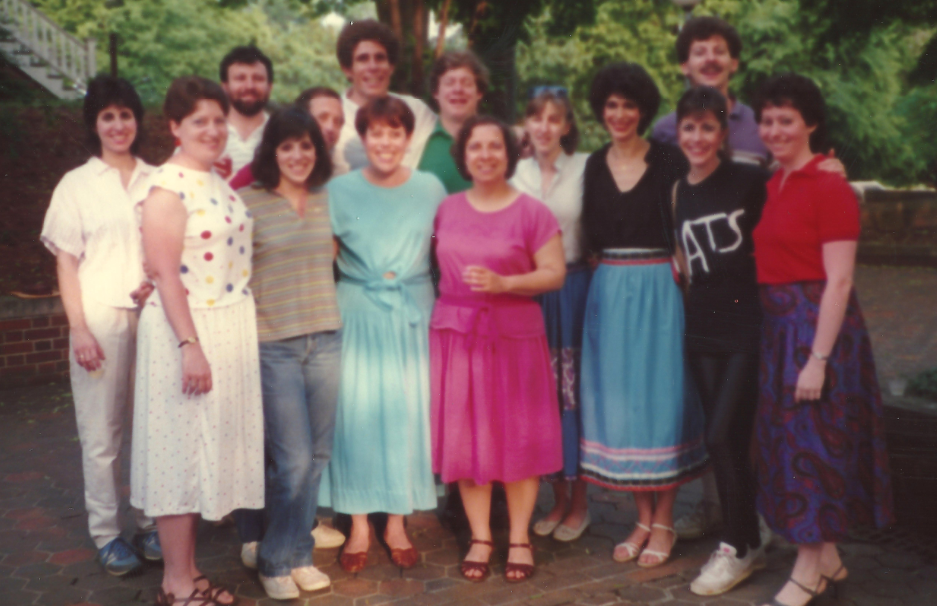
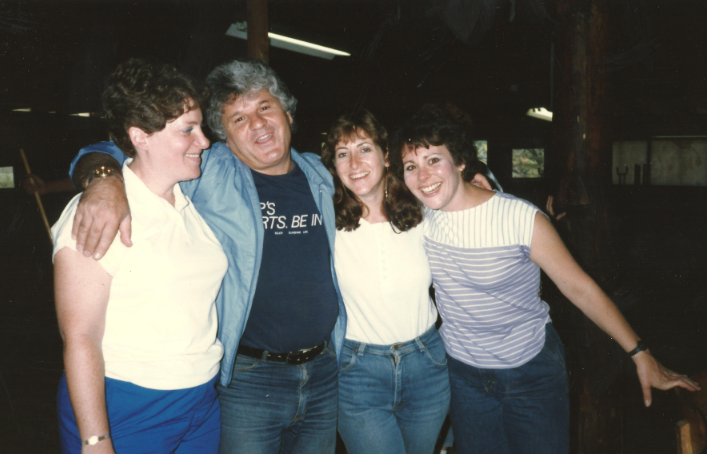
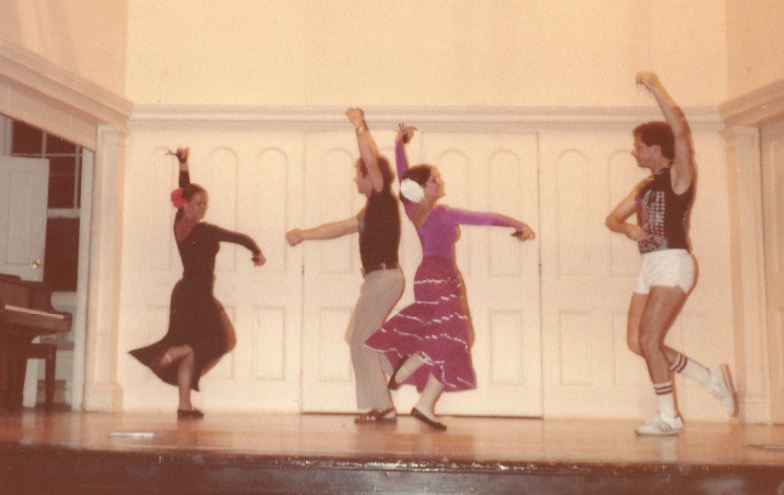

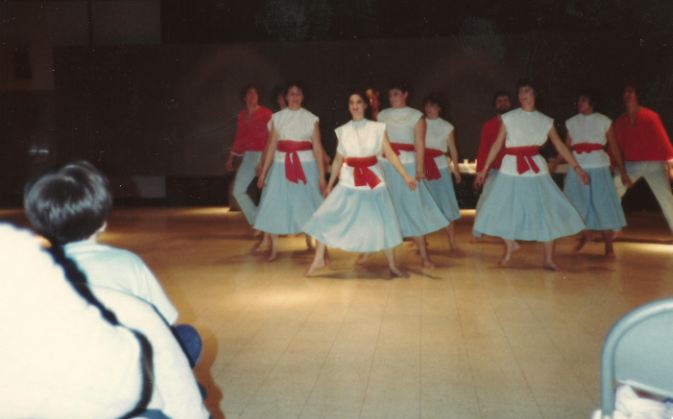
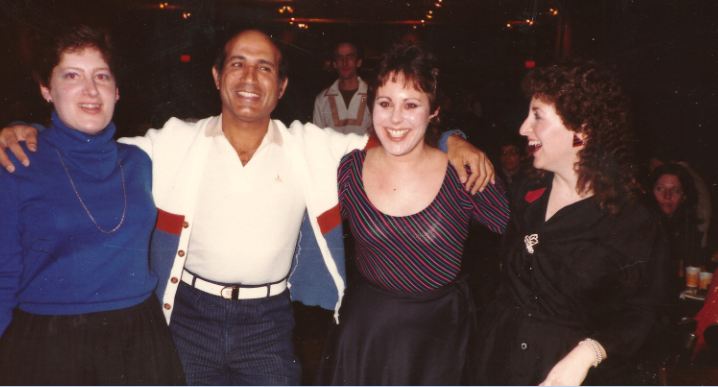
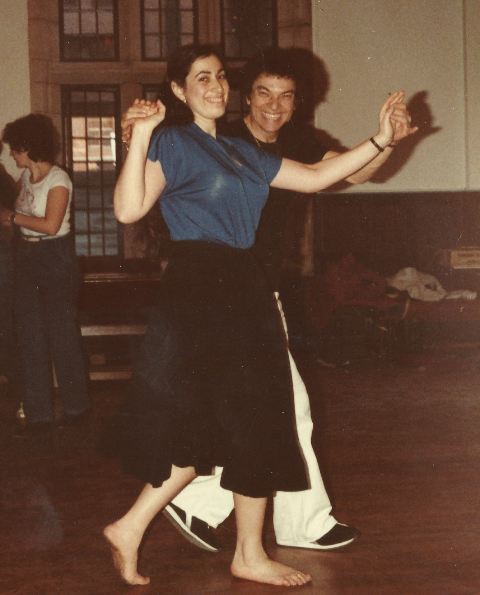
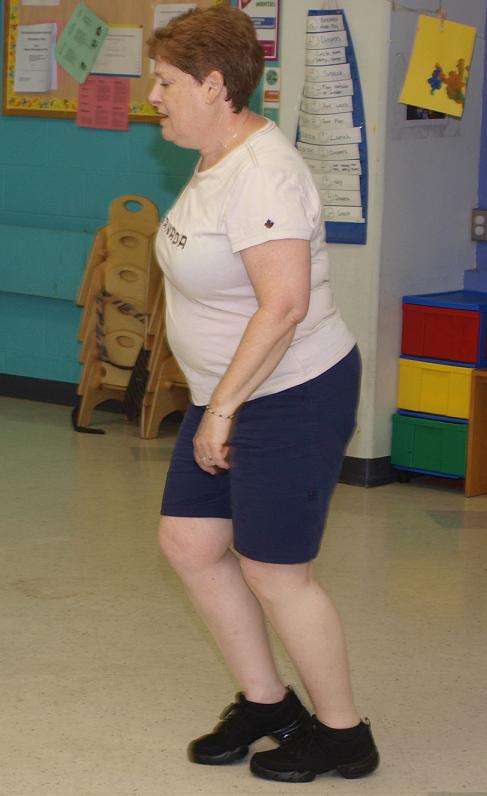
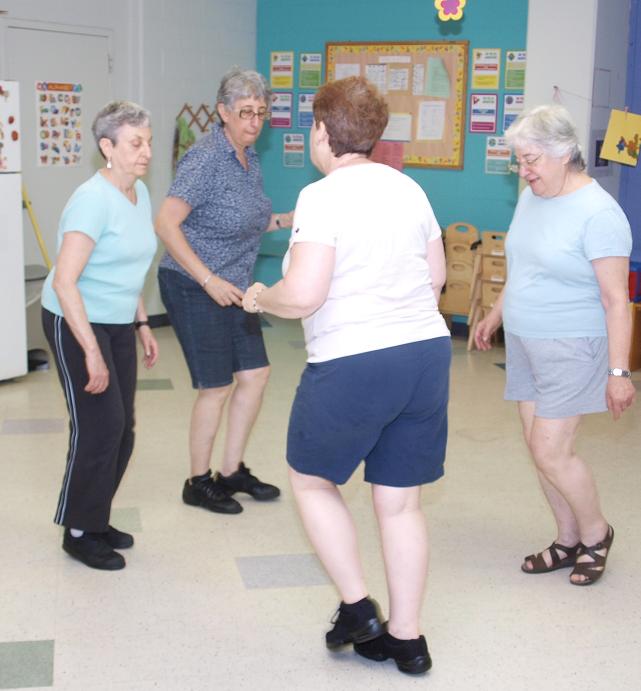
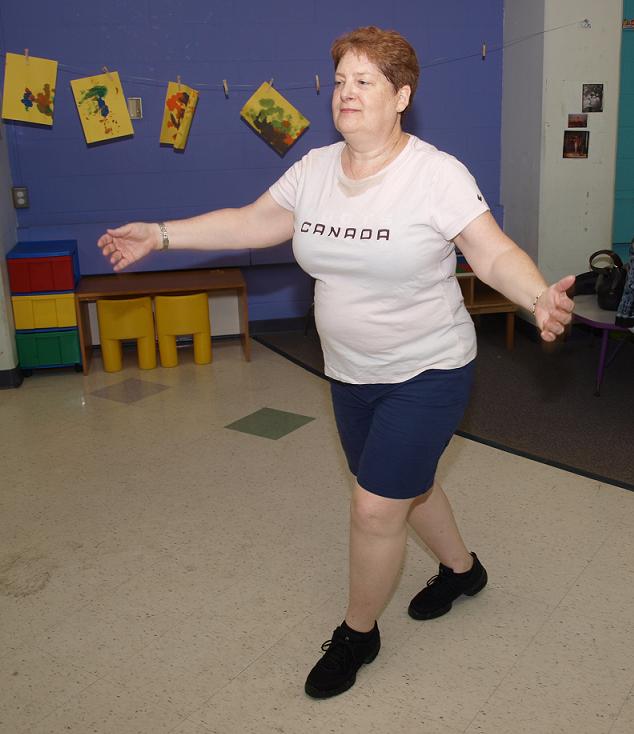
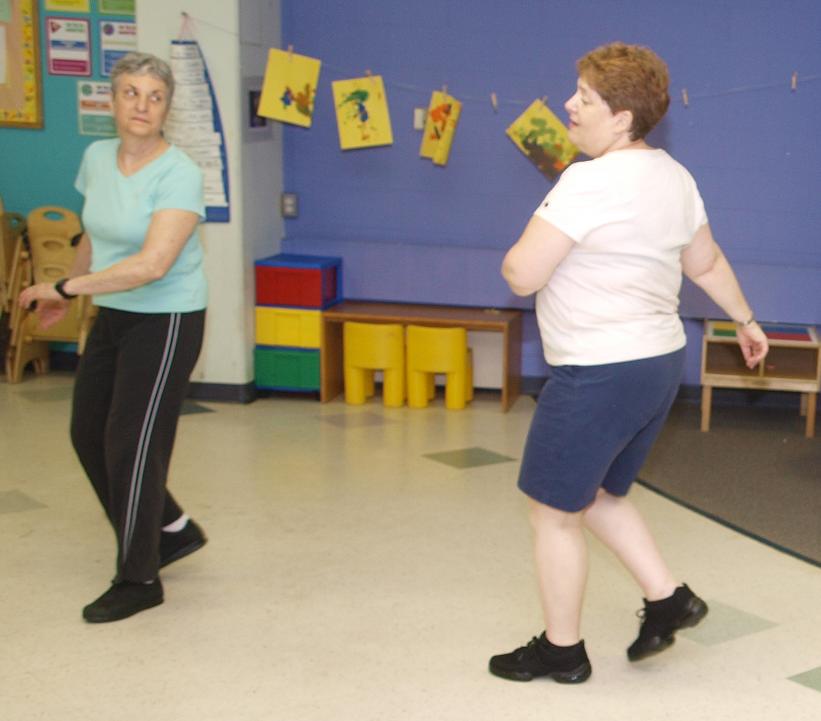
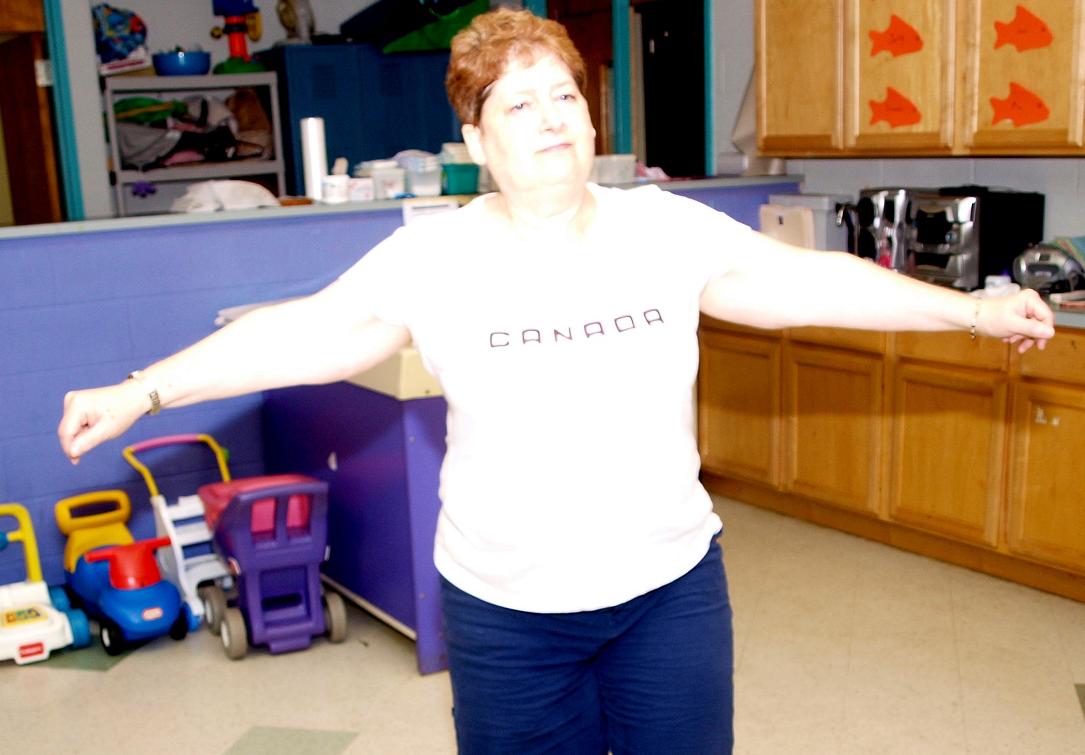
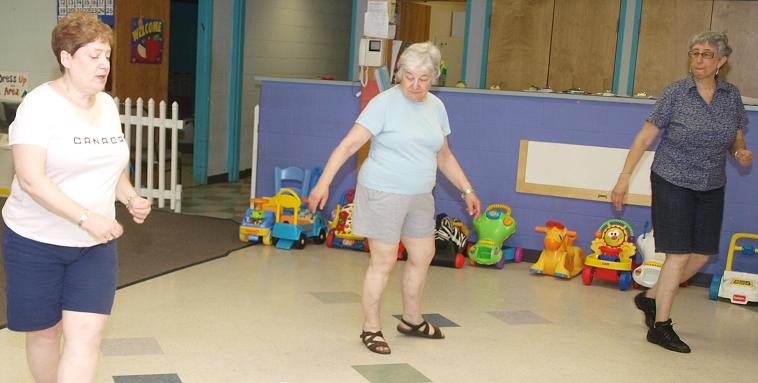
Sharon's story of, and her participation in, Israeli dancing began with her arrival in Philadelphia sometime in the mid 1970's. A native of Chattanooga, Tennessee, Sharon had previously spent some time in Boston and in the Jerusalem area of Israel, before settling in Northeast Philadelphia. While in Israel, she attended a session of Israeli dancing somewhere in the Jerusalem area, possibly at Hebrew University on Mount Scopus, but she found the steps and teaching somewhat confusing and did not pursue an activity that she would come to be associated with in the future.
Sharon arrived in Philadelphia after the city had experienced two decades of dramatic growth. Basically, until the 1950's, the Northeast had been farms with small communities in isolated areas. Part of the growth was in the establishment of regional complexes like hospitals, malls, shopping centers and office buildings along the major thoroughfares of Roosevelt Blvd, Castor Avenue, Bustleton Road and at the Northeast Airport. Included in this growth was the building of the JCC center, the Klein Branch, at the intersection of Jamison Avenue and Red Lion Road. As the building began operations, it offered a vast number of adult education classes including one in Israeli folk dancing on Thursday nights.
This eight week course, taught by Rebecca Gordon, proved to be the key to Sharon's future interest in Israeli dance; she and the class meld into the music, lore and steps. Many friends are made, friends who get together outside of class. It is an experience that made Sharon want to learn more about this art/dance form. And, she was taken by the music! At that time the music was very "land of Israel" driven. An example of a dance that was taught to her during this period, Eretz Yisrael Yafa, came from a song composed by Shaike Paikov; the dance has remained a personal favorite of Sharon's. For Paikov had composed several haunting and patriotic (to Israelis) tunes in this period after the 1973 Yom Kippur war. It would be to music like his that Israeli dancers at that time were drawn.
Sharon was at the time working for the Jewish Campus Activities Board which was housed in The University Of Pennsylvania's Hillel building at 202 S 26th St, the Louis Marshall House. Hillel is an organization dedicated to supporting Jewish related life on college campuses. At work, she mentioned this new interest to colleagues and was surprised to find out that for many years a Wednesday night Israeli dance session had been held on the campus of The University Of Pennsylvania.
This knowledge led to some research on her part. She would eventually find flyers dating back to pre 1948, proclaiming evenings of Palestinian folk dancing, and reference after 1948 citing Israeli folk dancing. This is not a surprise as our own studying of this form of dancing indicates that folk dancing in one form or the other was the norm throughout the Balkans into the Middle East. Even today, 10 to 15 percent of the International folk dancing repertoire originates from a region called Palestine which was controlled by the Turks and the British and is now the country of Israel. Israeli dancers would recognize this repertoire as consisting of the older Israeli dances.
At the time, the Wednesday session meeting at Penn's student union building, Houston Hall, was being led by Sara Caine, daughter of Temple Law Professor Burton Caine. Today, Sara is well known as Sara Caine Kornfeld, founder of "Change the World - it just takes cents," an international movement of high school students concerned with human rights violations in Darfur and the Sudan. As Sharon joins Sara's class, she finds herself dancing evenings of Israeli dance both on Wednesdays and Thursdays. She would eventually give up the Thursday session and become more involved with the dancing at Penn. On the left are some pictures of Sharon and other dancers from that time period. Some of these are at Houston Hall and others are at various dance camps. Click here if you would like to see other pictures from that time period.
Over the years, the session at Penn would undergo several changes. The Hillel facilities would be used from time to time for dances and special demonstrations. Outdoor dancing at one of the quadrangle like areas near Penn's International House, became the general rule during the time of year when the weather was pleasant enough.
This session drew more than just students from Penn as Sharon was to find out. She, herself, was not a student but instead was associated with Penn through her work. Students of other colleges and universities in the Philadelphia area would make the trek to West Philadelphia in search of the beat of the music, the allure of the dance steps, the camaraderie of the dancers and perhaps the possibility of finding that certain someone in the crowd.
The interest in Israeli dancing moved well beyond Penn's campus as groups of dancers started going to annual dance camps. This was something new to this genre of dancing in the United States. Fred Burke, for instance, started a dance camp in North Carolina geared to those who were teaching Israeli dance. Someone had the bright idea to have a camp for the benefit of the regular Israeli dancer; in either 1981 or 1982, in Port Jervis, NY, Camp Dalia was born. Several dancers, including Sharon, attended a week of that camp in August. Camp Dalia become the forerunner of the Hora Shalom dance camp which would meet annually during the second or third week of August in New York State. It was the first camp where multiple choreographers, such as Danny Uziel, Moshe Eskayo, Shlomo Maman, Yankele Levy, Motti Elfassa, Israel Yacovee, etc, would share teaching duties.
This type of camp became very successful and shortly, besides Hora Shalom, camps such as Rikudia, Tamaron, at the Paramount Hotel in NY State, and the favorite of many dancers, the Washington Memorial Day Camp, sprang up. The camps (especially Hora Shalom) augmented changes to the leadership of the Israeli dance session at Penn on Wednesday nights. Sara Caine moved on to what we really can report as bigger and better things. She was at first replaced by Judy Schwartz, program director at Penn Hillel. But, when Judy left to relocate to Washington, she was replaced by a group of dancers who eventually would be known as "The Committee." Sharon was one of those dancers. Others who were a part of this committee would be familiar to anyone who dances at Israeli dance sessions today and included Steve Schwartz, Ellen Weber, Beth Ladenheim, Rob Malerman and Rob Markowitz. They are later joined by Elana Yaron, Kim Neubauer and Lee Friedman. All of the dancers in the committee shared a responsibility after coming back from the dance camps which was not imposed on the other local dancers who may have also attended; the committee members brought back the dances taught at the camps and had the responsibility for teaching them at the Wednesday night sessions.
There were a lot of interesting Wednesday night session participants who were not committee members. One was Bobby Carr who at that time was active in both Israeli and International dancing. While dancing at the Wednesday session, he was (and may still be) running a Tuesday International folk dance session at Lloyd Hall on Boathouse Row during the fall and winter months and at the Art Museum during spring and summer.
These dance camps were just what the session ordered. Committee members attended these camps and, armed with the latest music and dance steps that they had been practicing for the week, prepared to teach these new dances throughout the year. Because of her participation at the camps, Sharon got her first taste of teaching as a committee member. Teaching was done on a rotating basis; a new dance was taught the first week; it was reviewed the next week and another new dance was also taught that evening; the dance had a final review on the third week, the second dance was reviewed and a third was introduced that evening. Therefore, any session at Penn would feature three dances being taught by three different instructors with the expectation that these three dances would become part of the session's repertoire. This was apparently a winning formula as the session became well known and attracted more and more dancers. While there was no conscious attempt to compete, the Wednesday session became as well known throughout the national Israeli dance community as the more established sessions of New York and Boston.
Space now became the issue and sometime in 1986, as best we can document, the committee mused over an offer from the Gershman Y at Broad and Pine to relocate the session to that facility and to use the third floor ballroom which was built to hold very large crowds. In 1987, this class moved to the new venue. While the class itself was advertised through the Gershman Y as part of its adult education program, the relationship between the facility and the committee was somewhat unique. A fee was collected for attendance and that fee was split, 95% going to the Y and 5% going to the committee which had started a fund to service the session. One of the functions of the fund was to give each committee member $50 as an advance on a dance camp of their choosing. This $50 went a long way at a time when a week of dance camp could cost as little as $125.
The session was designed to further interests in Israeli dance. According to Sharon, "The goal was to have a great dance session, with lots of people doing great dances and having fun." Some dancers would make use of the Y's facilities to weight train and/or play basketball before moving upstairs to go dancing. Whatever the reason, the session in this form proved successful through the late eighties and early nineties. Sharon would remain a member of the committee, teaching Israeli dance on a rotating basis, and gaining a reputation as an excellent instructor.
The Committee's relationship with the Gershman Y changed in the early '90s. The Y decided to go in another direction and hired in succession a series of dance leaders. The unity of the committee and how this center city session functioned was broken and within a few years the session was relocated out of the Gershman Y and into the western suburbs. But, this was not the only thing that changed in Israeli dance in the Philadelphia region. People were moving out of the area or into the suburbs. Other Israeli dance classes were occurring at the Kaiserman Y in the Philadelphia suburb of Wynnewood, in Elkins Park, a suburb north of Philadelphia, in Cherry Hill, New Jersey, and at Cafe Israel, in the Klein JCC in Northeast Philadelphia - the location of Sharon's first real exposure to this type of dancing. Cafe Israel was run by a former committee member, Rob Malerman. These sessions outside of center city Philadelphia were in many cases a better fit for the living and working patterns of the prospective dancers and complemented the Israeli dance class at the downtown Y.
There was an opportunity for Sharon at one of these satellite sessions. An Israeli dance teacher from Israel, Mimi Cogan, had been living in the Philadelphia area. She was teaching the Israeli dance class at Beth Sholom in Elkins Park, a synagogue famous for having Frank Lloyd Wright as its architect and planner. Mimi had also taken over the Kaiserman Y class, but she and her husband were moving back to Israel. Given Sharon's reputation for teaching, Mimi offered the classes to Sharon. (This fortuitous event occurred close to the cessation of dancing at the downtown Y.) Sharon took over both classes, in Wynnewood on Monday and in Elkins Park on Tuesday. The Kaiserman class was moved sometime in 1999 to the Main Line Reform Temple on Montgomery Avenue. At first the move was successful and you can see an article written in 2000 that appeared in the Neighbors section of the Philadelphia Inquirer highlighting this session. However, its success was fleeting, the result of competition in the form of an Israeli dance class at a nearby synagogue and a rejuvination of the Cherry Hill class which attracted several of her dancers. By 2001, Sharon decided to close this class and concentrate on her class at Beth Sholom in Elkins Park. At the top of this page are some pictures of Sharon during one specific class there, when she invited Roberto Haddon to guest teach in November 2010.
According to Sharon, the class at Beth Sholom started at Gratz College, just a few miles down Old York Road, and moved several times before settling in Beth Sholom. Sharon believes it was started by Hannah Weil with Mimi Cogan taking over sometime around 1996. Sharon became the session leader in 1998. Dancing each Tuesday evening in the Fischman Auditorium drew a nice crowd for many years. You can see her class in action on this web site in a video that was created for presentation at the 2006 Karmiel Festival in Israel. The festival was cut short by hostilities during the Israel-Lebanon War that summer. Below are several pictures including stills from that video and pictures from other dancing events including Sharon's annual Purim party.
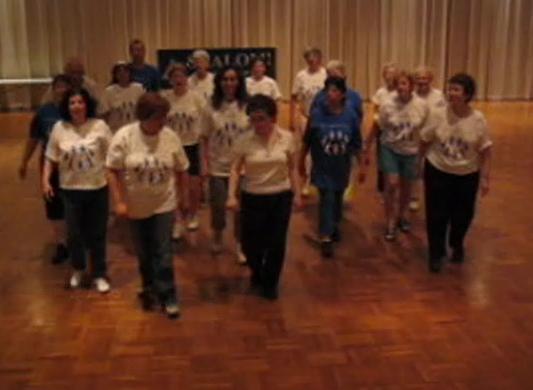
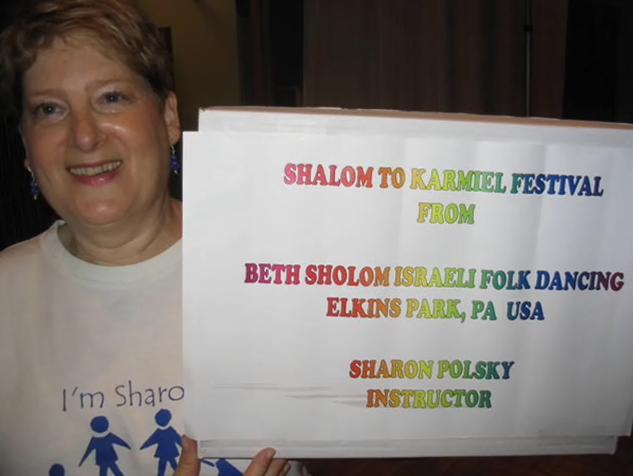
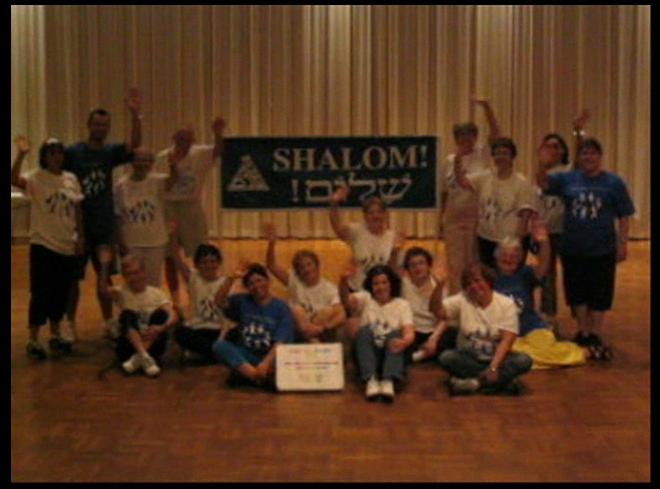
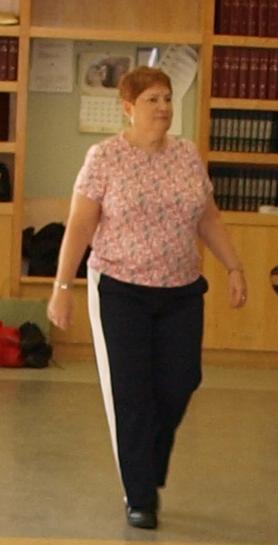
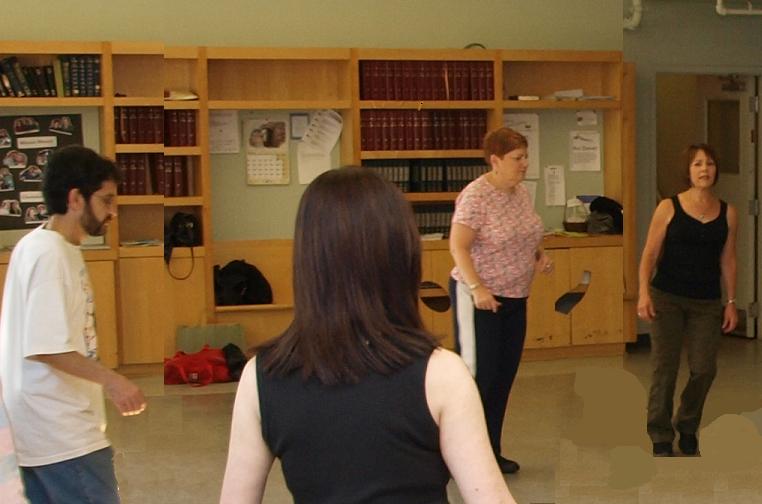
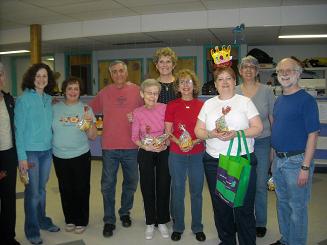
In addition to her Beth Sholom class, we would be remiss not to note another project Sharon recently started. During the past year she teamed up with Aaron Rosenberg to present an evening of "Israeli Oldies." You can see photos of the event in several of the articles on this website. Sharon plans to schedule more of these evenings of classics/oldies revivals in one form or another. Below are pictures taken of Sharon during the November 2010 Oldies Marathon which she and Aaron sponsored. In addition, you can see pictures from an event in Cinnaminson, the March 19, 2011 Oldies Marathon.
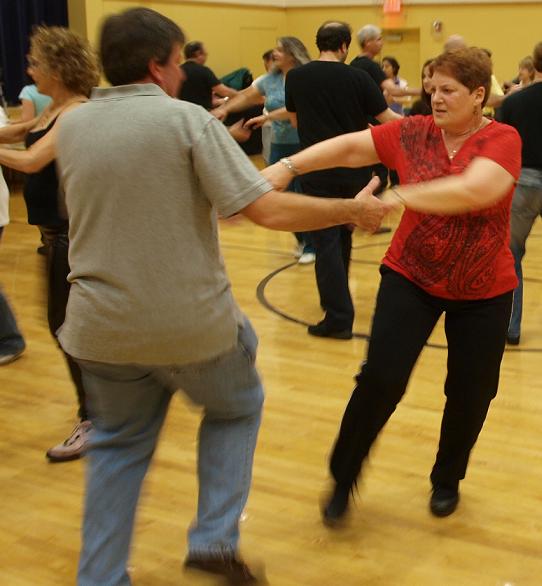
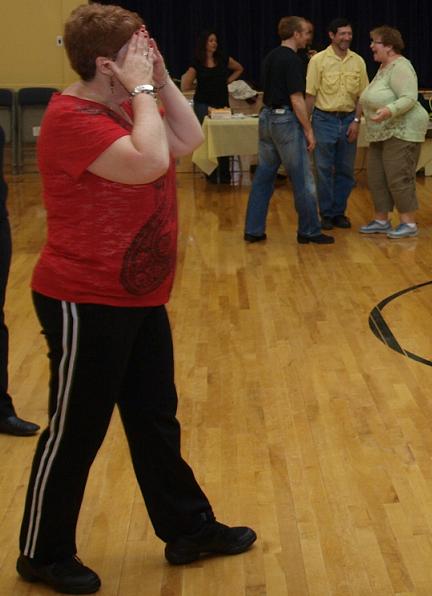
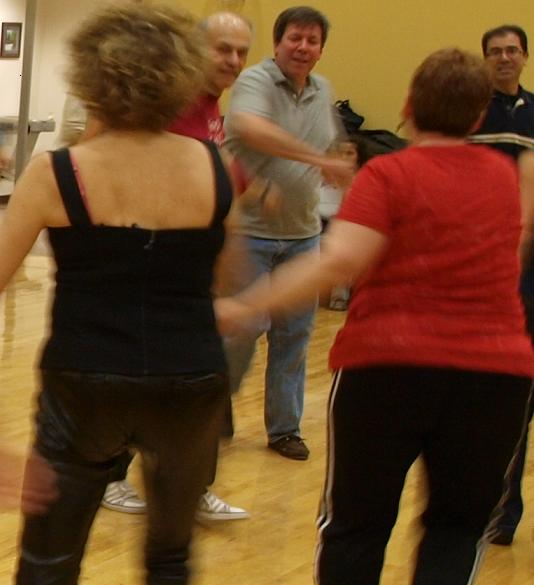
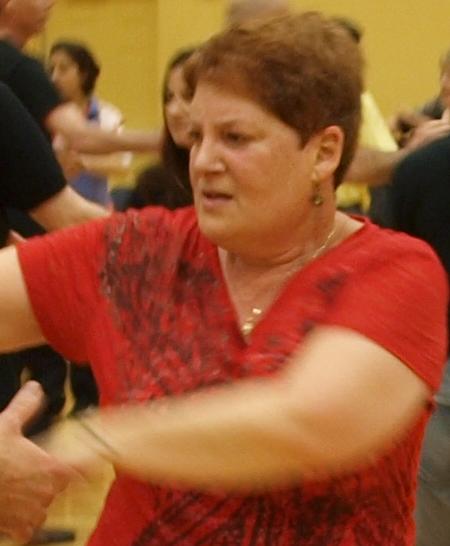
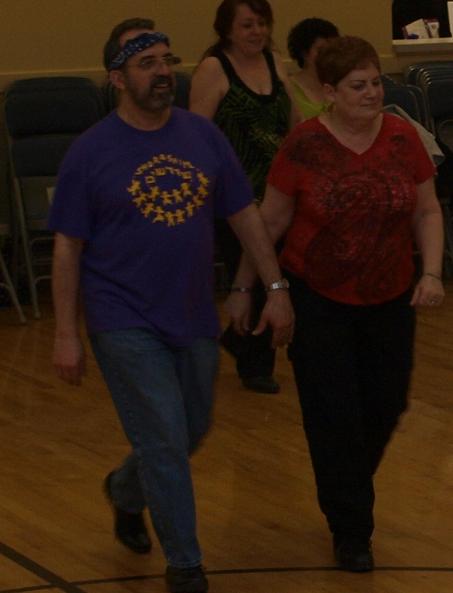
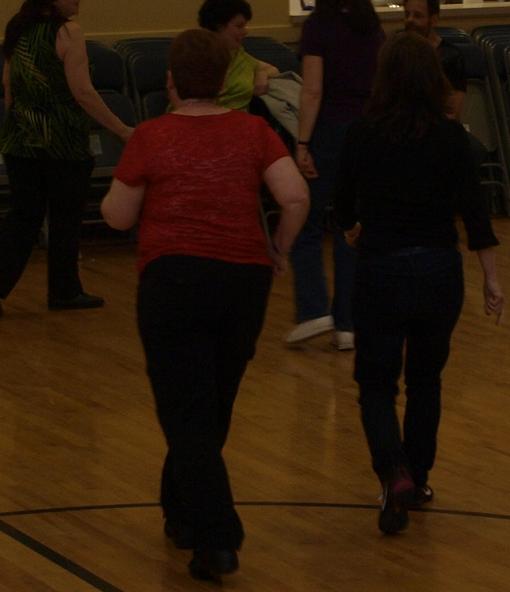
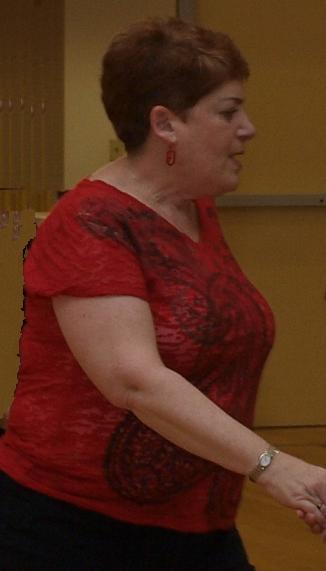
As Sharon continues to lead the class at Beth Shalom, she has the full responsibility of programming and instruction, just as she did when she was part of "The Committee." To stay current, Sharon has continued to attend dance camps. She had been a regular at Hora Aviv and has established a new tradition of regularly attending Kochavim, the Texas dance camp held outside San Antonio each spring. The pictures at the bottom of this article were taken at that camp. In addition, over the years, she has been attending the July 4th Toronto IsReal dance camp. Before the Toronto camp was created, Sharon was a regular at the Montreal Israeli dance camp, held under the guidance of Maurice Perez. The camp was active until about 5 years ago. Sharon asked that we specifically cite her dancing at the top of Mont Royal (for which Montreal is named) with the "Montreal Girls," Arlene, Leslie, Anita and Sheila, during the Montreal camp. It was a very moving experience for all of them.
It is not only dancing at these camps that is of interest to Sharon. On this site is more information about the Toronto IsReal 2011 Dance Festival. The dance festival included meals at local Toronto bistros, a trip around the city which included a boat cruise, a visit to Niagara Falls, and attendance at a Phillies game. The Philadelphia Phillies were conveniently playing in Toronto at that time. Since this web site covered it, we can attest to the fact that her trip to Toronto included a lot more than just dancing. Below, you can see pictures of Sharon as she participated in various activities during her trip to Toronto in July, 2011.

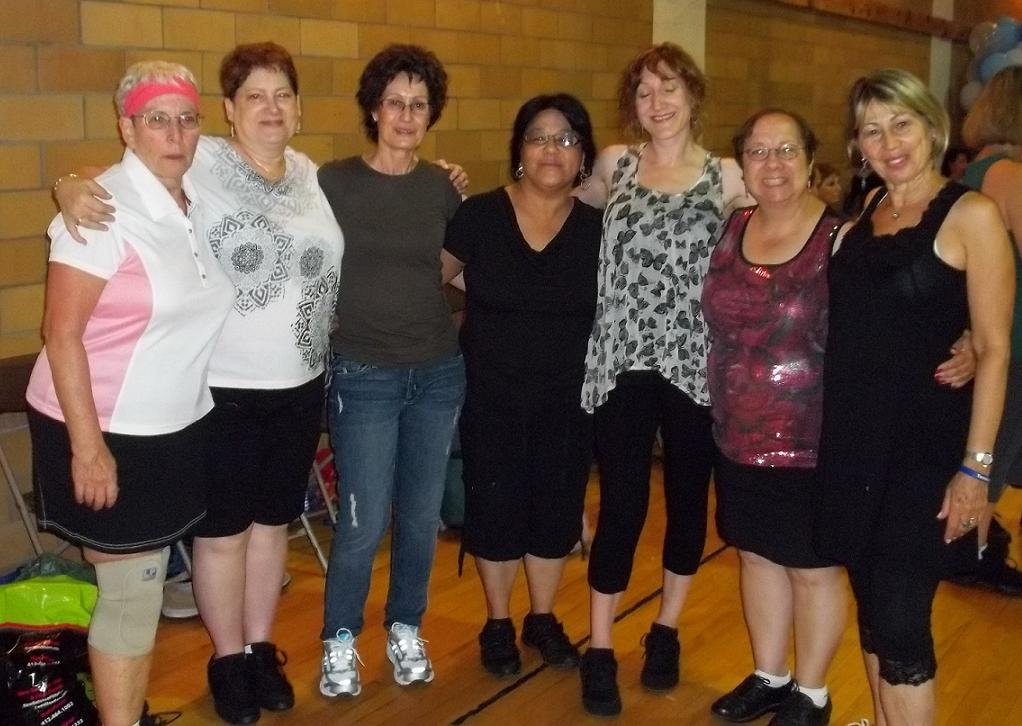
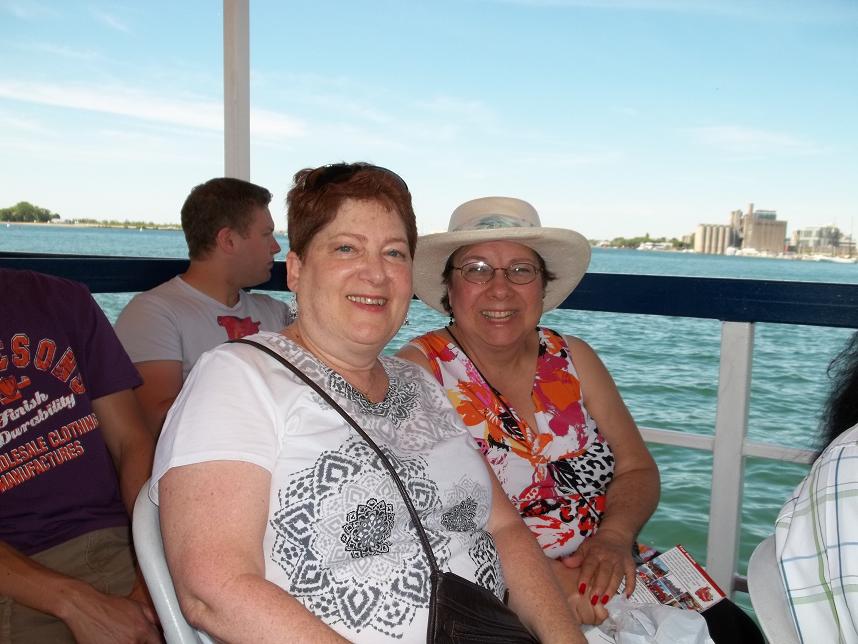

By 2011, the class at Beth Sholom had shrunk considerably, and in May, Sharon was informed by Beth Sholom that the synagogue could no longer provide facilities for her class. The reason is assumed to be due to the expense of keeping the facility open for just a single dance class. The pictures on the top right show Sharon dancing during one of the last classes held at Beth Sholom.
Since May, Sharon has found temporary new quarters at the Wyncote House, about a mile from the previous location. At this point in time, the class' future remains up in the air, but there can be no doubt that if Sharon has a say about it, it will continue somehow, someway.
Sharon Polsky's contribution to Israeli dancing in the Philadelphia area is indisputable. Beginning as a novice student, then as an avid learner, an enthusiastic camp attendee, a teacher of dance style and technique, and with the reputation as an instructor extraordinaire, Sharon has shared her passion. This article was written to honor Sharon and acknowledge her contribution to Israeli dance in Philadelphia.
